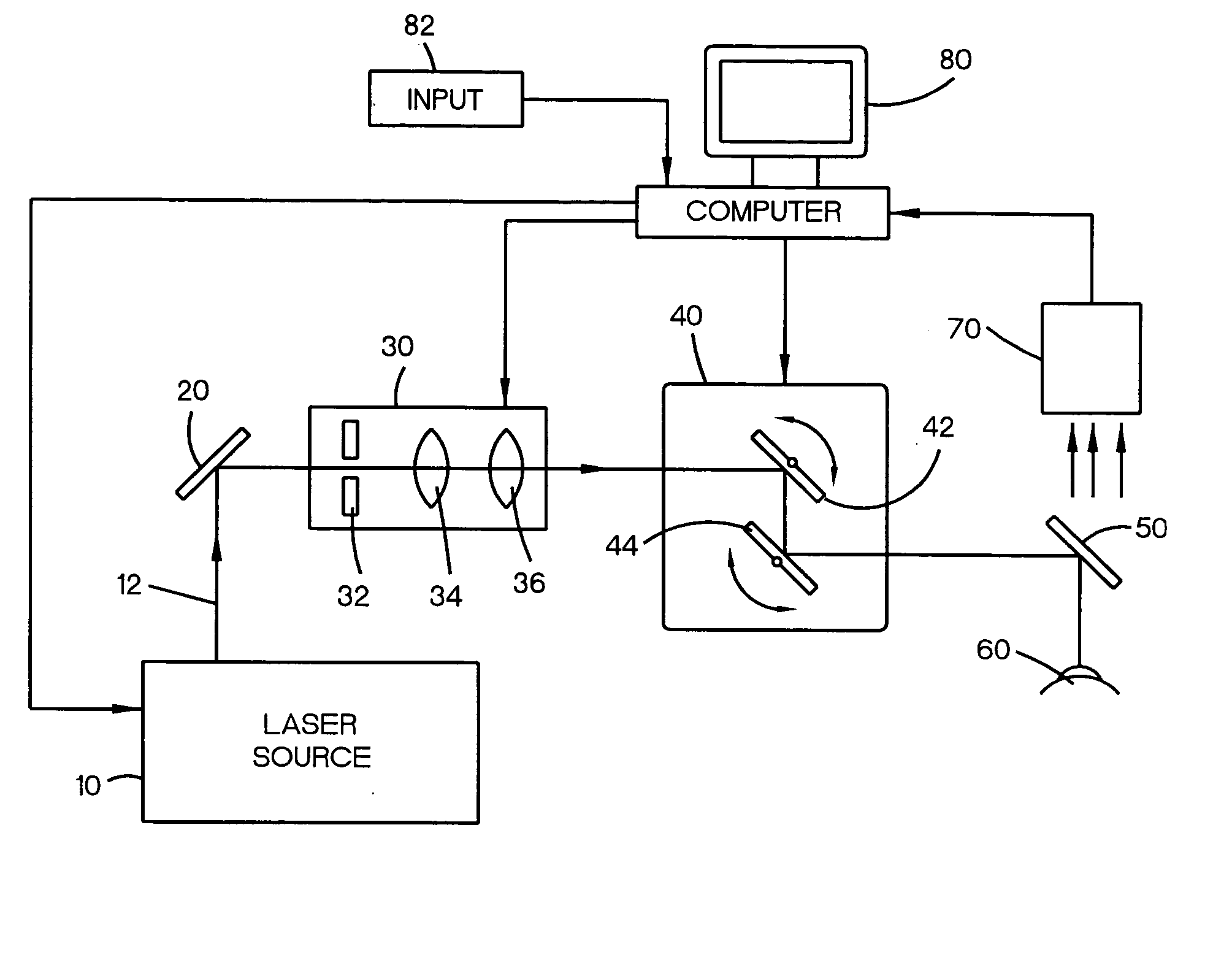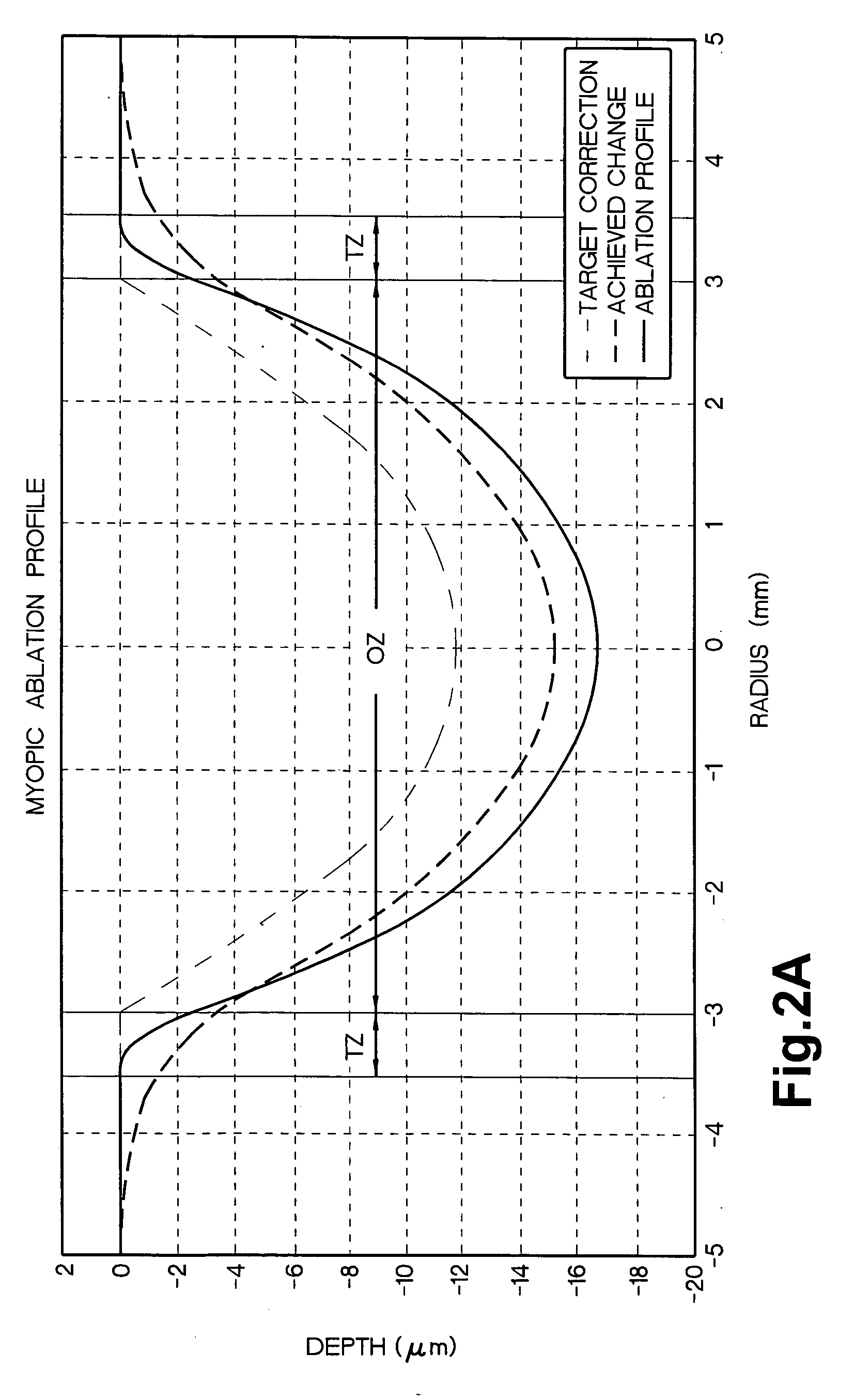Method and apparatus for controlling ablation in refractive surgery
a refractive surgery and ablation depth technology, applied in the field of refractive surgery, can solve the problems of reducing the quality of vision in scotopic conditions, reducing the accuracy of ablation results, so as to reduce the induced aberration, the effect of accurate outcome and reducing spatial overlap
- Summary
- Abstract
- Description
- Claims
- Application Information
AI Technical Summary
Benefits of technology
Problems solved by technology
Method used
Image
Examples
Embodiment Construction
[0053] Ablation designs, in accordance with the present invention, start with a target corneal surface height change needed to correct preoperative refractive error or aberration. This is referred to as the correction map Δh. The correction map is specified within a central optical zone (“OZ”). The OZ preferably centers on the line of sight and matches the maximum size of the pupil. In accordance with the present invention, the correction map for the correction of myopia, hyperopia, and astigmatism are parabolic. This reduces the induction of aberrations compared with spherical and cylindrical corrections.
[0054] Referring to FIG. 1, the OZ is surrounded by a transition zone (“TZ”) to produce a smooth, continuous blend in ablation depth, slope, and curvature with the surrounding cornea. The OZ and TZ together constitute the entire ablation zone (“AZ”). In accordance with the present invention, a constrained iterative deconvolution algorithm is used to compute the ablation map for th...
PUM
 Login to View More
Login to View More Abstract
Description
Claims
Application Information
 Login to View More
Login to View More - R&D
- Intellectual Property
- Life Sciences
- Materials
- Tech Scout
- Unparalleled Data Quality
- Higher Quality Content
- 60% Fewer Hallucinations
Browse by: Latest US Patents, China's latest patents, Technical Efficacy Thesaurus, Application Domain, Technology Topic, Popular Technical Reports.
© 2025 PatSnap. All rights reserved.Legal|Privacy policy|Modern Slavery Act Transparency Statement|Sitemap|About US| Contact US: help@patsnap.com



